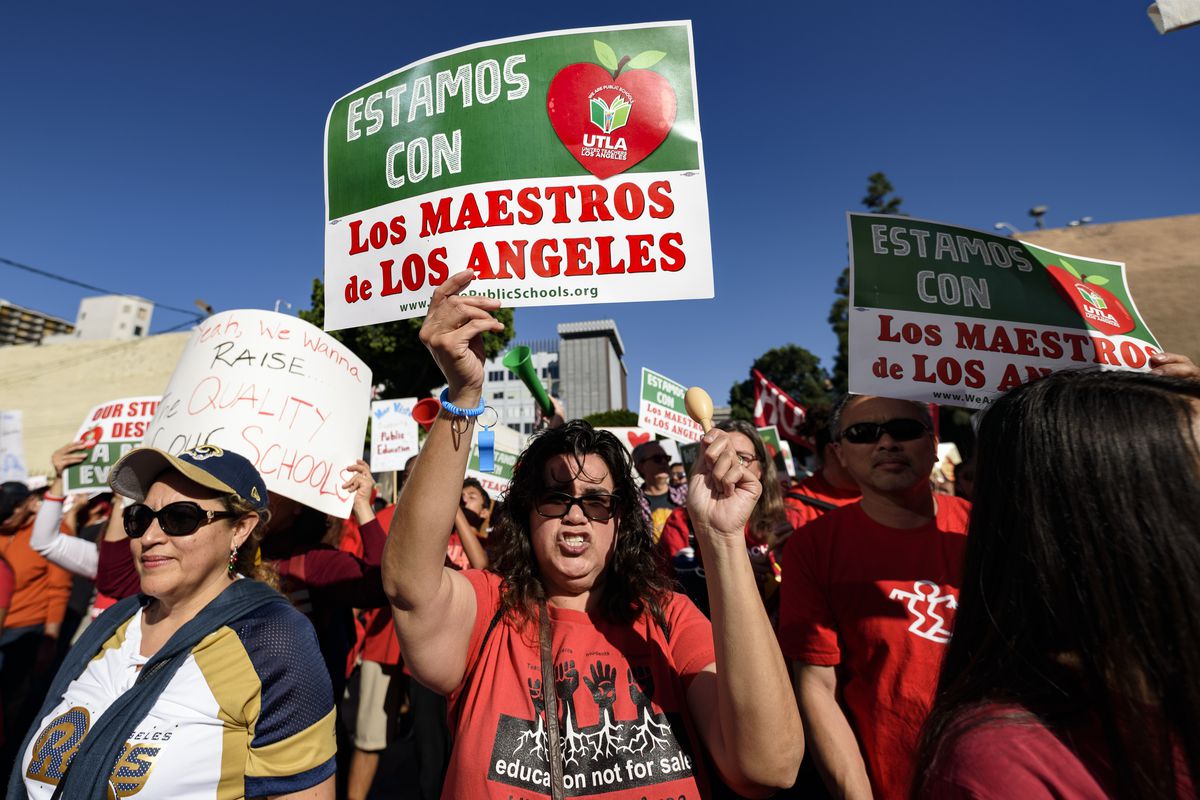Los Angeles teachers are set to strike on Monday, a plan that will impact about a half million students in the nation’s second-largest school district.
The move, which follows 20 months of failed negotiations, will involve more than 30,000 teachers at 900 schools.
The strike comes after a “red state teacher revolt” that rolled through places like Arizona, Kansas and West Virginia last spring. But this time, the teachers are fighting against Democratic leaders in a deeply blue state with union-friendly policies.

On the union side, United Teachers Los Angeles is fighting for pay raises, smaller class sizes and additional support staff. On the opposing side is the Los Angeles Unified School District, which says it simply doesn’t have the funds for such changes. On Friday, the union rejected the district’s latest offer, which involved pay raises, smaller class sizes and increased support staff, but did not meet all the union’s specific requests.
In the background is tension over the expansion of charter schools and questions over who gets to control the direction of the district. Its 2017 school board election was the most expensive in U.S. history, with outside groups ― including unions ― spending nearly $15 million.
Nearly every leader in this fight is a Democrat, with the two sides representing larger fissures within the Democratic Party about the future of public education. What happens with this teachers strike could set the stage for how these issues play out in the 2020 election and beyond.
“This conflict is forcing the issue of school privatization and charter schools in the Democratic Party,” said Lois Weiner, an independent researcher and consultant who has studied teachers unions.
Los Angeles teacher Gillian Claycomb argues that even though the superintendent of schools, Austin Beutner, is a Democrat, his approach to education makes him “just as bad as [Education Secretary] Betsy DeVos and [President] Donald Trump.”
“He is a billionaire. He spends a lot of time with other billionaires and people with very deep pockets who are really invested in privatizing public education,” said Claycomb, a high school history teacher and a chapter leader with the local teachers union.
At the heart of the strike is the issue of resource distribution. The state of California spends comparatively little on education per pupil. While United Teachers Los Angeles points to $2 billion that the school district keeps in a reserve fund as a way to pay for changes, Beutner contends that the district needs to maintain that cushion.
“A strike will worsen the culture and climate in our schools. What it won’t do is provide more money to reduce class sizes and hire more nurses, counselors and librarians,” wrote Beutner in a Los Angeles Times op-ed this week.
Los Angeles teachers complain of class sizes of up to more than 40 people, inadequate “wraparound” services for needy students and a severe shortage of school nurses. Many elementary schools only have a nurse for one day a week.
Beyond the specifics of the debate lie the larger philosophical questions of how Democrats think public funds should be distributed and what a large, diverse, public school district should look like.
“Trump has been defeated in California. There is no Trump constituency. They were defeated, but that doesn’t mean everything is hunky-dory. We have other battles,” said labor historian Nelson Lichtenstein, a professor at the University of California Santa Barbara.
Charter schools, in particular, have long been a contentious issue within the Democratic Party, pitting teachers unions against education reform groups. Staff at charter schools, which are publicly funded but often privately run, are rarely unionized.
To the dismay of some progressive groups and politicians, President Barack Obama’s two secretaries of education, Arne Duncan and John King, championed the growth of charter schools. In 2017, the NAACP called for a moratorium on these schools ― a stance that complicated the idea that so-called school choice is a civil rights issue, as education reform groups often argue.
Some groups like Democrats for Education Reform have pushed back against the portrayal of school choice as anything but liberal. The group only supports nonprofit public charter schools and is opposed to other forms of school choice, like voucher programs.
“We’re very clear about the legacy in which we operate. We operate within the legacy of Barack Obama. His agenda is our agenda, and it’s an agenda that hundreds of Democrats across the country support,” Shavar Jeffries, leader of Democrats for Education Reform, told BuzzFeed in February 2018.
But the election of President Trump and his selection of the pro-charter DeVos to be secretary of education have put these Democrats in a tricky spot. Charter schools quickly became associated with DeVos, whom many see as public education’s No. 1 enemy. The issue was suddenly a partisan one, with polls showing liberal support for charter schools dropping. In the 2018 elections, a new crop of liberal candidates criticized charter schools with zeal.
Last spring’s wave of teacher walkouts centered in right-to-work states, where unions have relatively little power. In Los Angeles, the local union is flexing its muscle, with 98 percent of voting members supporting a strike.
How the city’s Democratic mayor, California’s governor and its state superintendent for public instruction react to the strike will be watched closely.
“In the red-state rebellion, people were standing up and fighting against the pro-corporate policies of the GOP. In LA, people are going to be standing up and fighting against the pro-corporate policies of the Democrats,” said Claycomb, who has been teaching for nine years.
Lichtenstein sees the conflict as a sign of what’s to come if Democrats make greater gains in 2020.
“These are the kind of fights we’re going to have, over charter schools and raising taxes,” he said.

